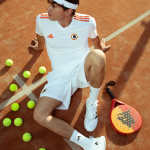
Street football has never died
Although we don't talk about it much anymore, that's why it will never go out of style
April 14th, 2020
In recent days we have reflected on how much and what has been the importance of street football for the last generations: an inattentive eye could draw hasty conclusions and think that street football has undergone a slowdown in its spread in recent decades, as if were ''outmoded'', but that's not the case at all.
One of the reasons why we are led to think that it may be that the plots of commercials or football-themed films no longer tell stories started on the street, in suburban pitches or in oratories, but prefer to talk only about amateur fields, the earthy ones, with the grass peeled and with faded lines, but not ugly enough to strike straight to the heart. The brands themselves no longer associate their image with the small matches on the street: the spot of Nike's cage, which has remained in history, is 20 years ago; that of Ooredoo with Messi challenging the children of 2014 and that of Nike for the launch of the 2016 Magista Obra are the last two examples of "street football", followed by a series of advs where the part played was seen only in the fields at 11.
The images of kids who pursue a dream starting from their favelas neighborhood and manage to ''arrive'' effortlessly, placing their talent at the center of their journey, are less and less, replaced by those of players with the typically American mentality of the ''hard work pays off'', making less and less leverage on their humble origins and on the fields where they scored their first goals, as if that type of rhetoric linked to poverty no longer worked.
The real roads, those where once you could put two sweatshirts on the ground to recreate a field in a few moments, are now completely invaded by means of transport and that classic ''stoooop! there's a car!'' would become too repetitive and break the game too much. And so we don't see football on the street anymore.
''We'' understood as Italians, in fact it is difficult to complete this type of reasoning without making clear geographical differentiations: what we can define as streetfootball could have been carried out on the street until a few decades ago, but the place of aggregation par excellence where this movement has developed in the last 40 years is the oratory; in Brazil the fields of favelas are the aggregation centers, in Africa they are plots of arid land or endless expanses of grass. The only example of a streetfootballer community that has a nerve center that lasts over time is the French one, rooted in the fields of the banlieu from which Riyad Mahrez, Wissam Ben Yedder and Kylian Mbappé have ''come out'' - very recently. A relationship, that of the French with the pitches, documented in the saga ''Ballon sur bitume'', where all the dynamics that lead a boy to rely on this type of context to make their way in football and in life are deepened.

Perhaps any boy nowadays does not have the opportunity to be able to fit free time into his routine, driven by the constant desire of parents to see their child excel in any context. Or, without pointing the finger at anyone, maybe it is the son himself who prefers to spend his free time with FIFA 20 rather than peeling his knees in reality. Yes, FIFA 20, not FIFA STREET: even video games have had a turnaround, only this year has it recovered with the ''volta football'' mode that allows you to play futsal, but not streetfootball as you he could do with the unforgettable game produced until 2012.
We also tried to ask ourselves what was the reason that led the Olympic committee to welcome 3vs3 basketball among its disciplines and, instead, not to consider futsal nor streetfootball.
The first difference is structural: as mentioned before, 4 sweatshirts are enough to recreate a football pitch; the lines of the pitch, the nets and the height of a door that does not exist are all the result of the imagination of the players. For basketball this cannot happen because the presence of at least one basket is necessary;
Street football has no precise rules, it is flexible: you don't need an area with a certain size, you don't need an inflated ball with precise atmospheres, there is no predefined number of players (and if a team has a very strong player, opponents can play with an extra man as long as he is scarce), there is no time limit of play if not the ''who scores next wins all'', the fouls are related to the pain threshold of those who suffer them, and so on.
In basketball, this cannot happen because between infractions, the ball that must necessarily rebound and the violence of fouls, too many objective assessments should be made, which is why it has been a few years that streetball, while remaining a sport that is played on the asphalt, has taken on of the more rigid connotations, so much so as to be integrated and affiliated to the national basketball federations all over the world, following that cultural trend that began in the African American ghettos and ridden now by the major brands around the world, making it become a real business.
For streetfootball imagining an administration "from above" is pure utopia: it is mainly pick-up games, each quarter/country/region/state has its own ethical rules and not too defined, a possible imposition of rigidity would mean distorting the spirit of the game. Street football has nothing to do with global football, the football of official events, media images, commercial products: the character of a boy is formed with street football, they assume their responsibilities for the first time and you learn to pay the consequences of your actions, you consolidate friendships and enmities, you face the stark reality of life by running behind a ball, without that "parental protectionism" to which the new generations are resting.
Streetfootball doesn't need an audience because it still lives on dreams and imagination, where winning 10-9 against neighbors is like winning a Champions League final, and the 80,000 fans are just in their heads.
We are convinced that street football has lived a golden age, but it is not like that: street football is gold; each of us through this sport has learned a lot and has stored personal memories and experiences, the common ones probably related to television commercials or to a sharing of experience on a temporal level, but has never left our lives; simply, after teaching us so much, he disappeared from our screens.


















